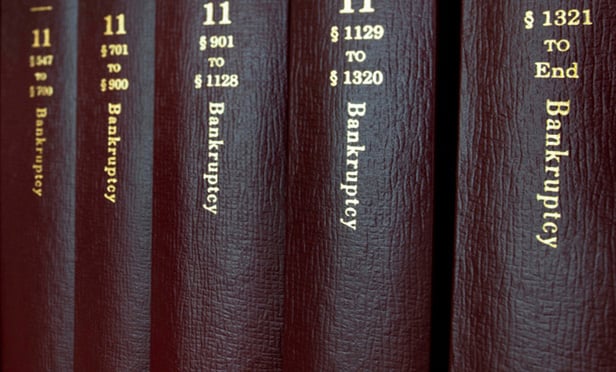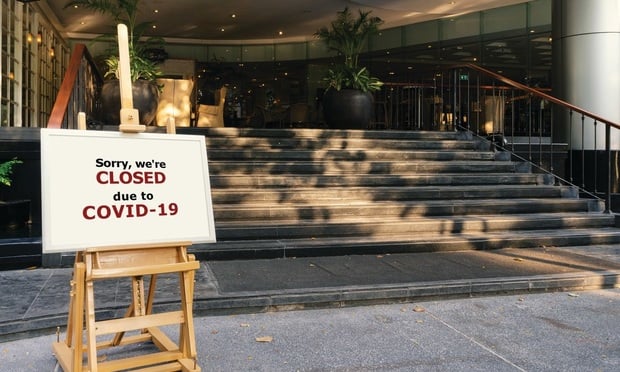Features

Is the Use of Third-Party Releases In Bankruptcy Cases Stretched Too Thin?
Third-party releases are often incorporated into the bankruptcy plan as a means of protecting nondebtor parties from litigation that is directly or even tangentially related to the debtor's business. Over the last several years, the scope and use of such third-party releases appears to have been stretched arguably to the breaking point as demonstrated in a recent and important district court decision.
Features

Wrestling With the Meaning of 'Ordinary' Under the Bankruptcy Code
The Bankruptcy Code protects regular, ordinary commercial transactions between distressed companies and vendors willing to continue the relationship. But what is ordinary?
Features

Common Issues In Commercial Property Bankruptcies
A review of landlord-tenant bankruptcy issues that should be in the forefront for landlords and tenants in determining rights, obligations and strategies when a bankruptcy involving a commercial property is filed.
Features

Sheppard Mullin's Suit Over Buyer's Deposit to Acquire Bankrupt Film Co.
A suit filed by the law firm Sheppard Mullin as plaintiffs reveals Chapter 11 acquisition talks fell through between the firm's client Cecchi Gori Pictures and a potential buyer comprising a trio of film producers.
Features

The Coming Thaw for Distressed M&A: Opportunities and Best Practices for Lenders In Financing Distressed Business Acquisitions
This article focuses on the financing opportunities buying the business of a Chapter 11 debtor will create for lenders, highlights the benefits of financing bankruptcy acquisitions, and identifies some potential challenges and best practices to ensure that lenders minimize any risks and receive maximal protection for themselves.
Features

Update on Bankruptcy Appellate Practice Part Four: Interlocutory Appeals — Deadlines
This installment of our appellate series reviews recent cases addressing the district courts' review of interlocutory bankruptcy court orders and the enforceability of appellate deadlines. As we have shown with other case law governing appeals, real obstacles confront practitioners appealing from bankruptcy court rulings.
Features

Corporate Resiliency Revisited: Ensure Financial Health Ahead of an Economic Downturn
now is a critical time for companies to reassess their business and finances if they have not already, so that they can be prepared for the future. Proper planning is key to ensuring a company's financial health when facing an economic downturn.
Features

Poorly Drafted Nondisclosure Agreements Can Have Lasting, and Expensive, Results
In today's increasingly complex, competitive and litigious business environment where nondisclosure agreements have crept in scope to also be noncompete agreements or anti-poaching agreements in addition to confidentiality agreements, the need for legal professionals with generalized knowledge who have managed business enterprises on a whole has become a mainstay of the corporate world.
Features

Update on Bankruptcy Appellate Practice Part Three — Finality
This installment of our appellate practice series reviews recent cases addressing the appellate jurisdiction of district courts and the courts of appeals, referred to as the "finality" doctrine.
Features

Bankruptcy Court Gives Pre-Petition Antitrust Claims Administrative Priority Status
The Delaware District Bankruptcy Court ruled that claims arising from pre-petition antitrust cases filed against the debtor could constitute post-petition claims entitled to administrative priority status. The court held that the public policy that favors a "fresh start" for debtors would not preclude damages from post-petition sales of products in violation of federal antitrust laws from receiving administrative expense priority.
Need Help?
- Prefer an IP authenticated environment? Request a transition or call 800-756-8993.
- Need other assistance? email Customer Service or call 1-877-256-2472.
MOST POPULAR STORIES
- The 'Sophisticated Insured' DefenseA majority of courts consider the <i>contra proferentem</i> doctrine to be a pillar of insurance law. The doctrine requires ambiguous terms in an insurance policy to be construed against the insurer and in favor of coverage for the insured. A prominent rationale behind the doctrine is that insurance policies are usually standard-form contracts drafted entirely by insurers.Read More ›
- The Brave New World of Cybersecurity Due Diligence in Mergers and Acquisitions: Pitfalls and OpportunitiesLike poorly-behaved school children, new technologies and intellectual property (IP) are increasingly disrupting the M&A establishment. Cybersecurity has become the latest disruptive newcomer to the M&A party.Read More ›
- A Lawyer's System for Active ReadingActive reading comprises many daily tasks lawyers engage in, including highlighting, annotating, note taking, comparing and searching texts. It demands more than flipping or turning pages.Read More ›
- Abandoned and Unused Cables: A Hidden Liability Under the 2002 National Electric CodeIn an effort to minimize the release of toxic gasses from cables in the event of fire, the 2002 version of the National Electric Code ("NEC"), promulgated by the National Fire Protection Association, sets forth new guidelines requiring that abandoned cables must be removed from buildings unless they are located in metal raceways or tagged "For Future Use." While the NEC is not, in itself, binding law, most jurisdictions in the United States adopt the NEC by reference in their state or local building and fire codes. Thus, noncompliance with the recent NEC guidelines will likely mean that a building is in violation of a building or fire code. If so, the building owner may also be in breach of agreements with tenants and lenders and may be jeopardizing its fire insurance coverage. Even in jurisdictions where the 2002 NEC has not been adopted, it may be argued that the guidelines represent the standard of reasonable care and could result in tort liability for the landlord if toxic gasses from abandoned cables are emitted in a fire. With these potential liabilities in mind, this article discusses: 1) how to address the abandoned wires and cables currently located within the risers, ceilings and other areas of properties, and 2) additional considerations in the placement and removal of telecommunications cables going forward.Read More ›
- The New York Uniform Commercial Code Comes of AgeParties in large non-consumer transactions with no connection whatsoever to New York often choose its law to govern their transactions, and New York statutes permit them to do so. What most people do not know is that the New York Uniform Commercial Code is outdated.Read More ›
